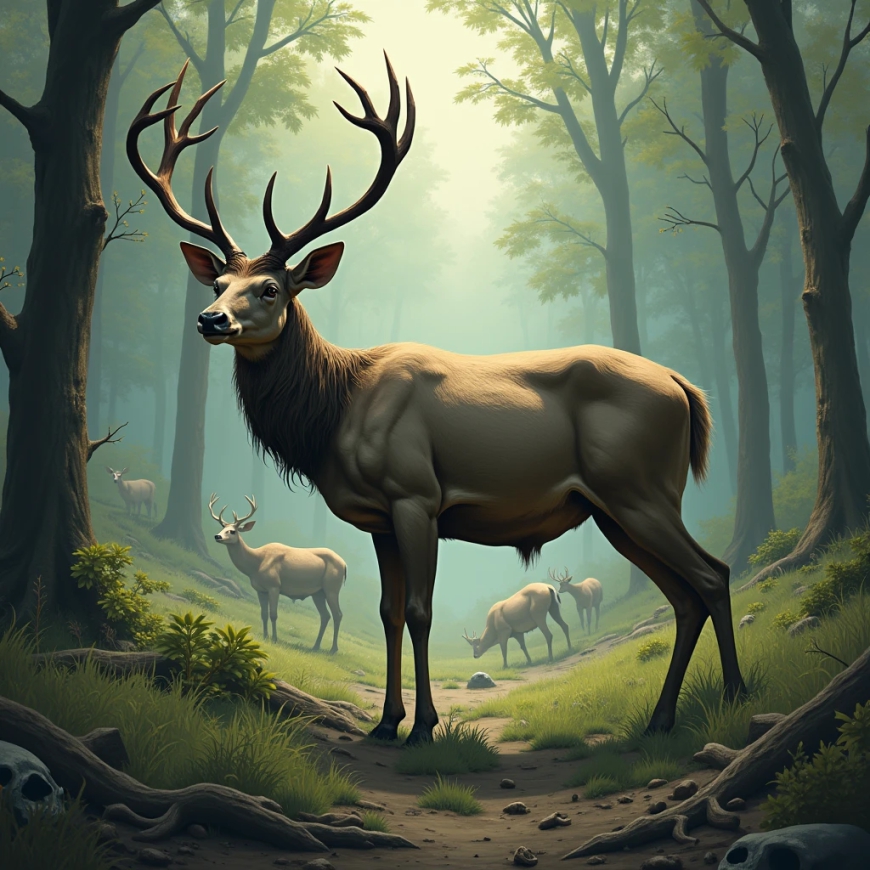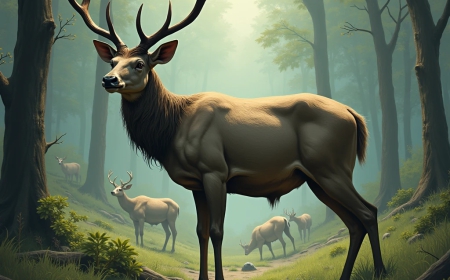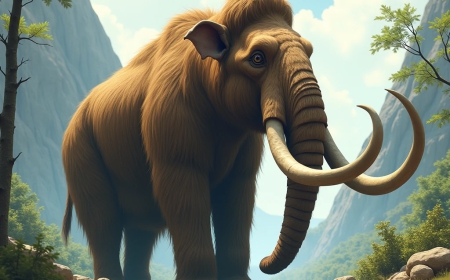Chronic Wasting Disease: A Growing Threat to Deer and Wildlife
Chronic Wasting Disease (CWD) is a fatal, neurodegenerative disorder that affects deer, elk, and moose, primarily within North America. First identified in the 1960s in Colorado, CWD has spread rapidly across the continent and is causing increasing concern among wildlife biologists, hunters, and conservationists. What makes CWD particularly alarming is its ability to spread among deer populations and its potential to affect broader ecosystems. In addition, although there’s no definitive proof that CWD can infect humans, research is ongoing into its potential risks.

What is Chronic Wasting Disease?
CWD is caused by a type of misfolded protein known as a prion, which induces abnormal folding of specific normal proteins in the brain. This misfolding leads to the accumulation of prions in the central nervous system, causing progressive brain damage. As the disease progresses, animals exhibit symptoms such as weight loss, drooling, lack of coordination, excessive thirst, and altered behavior, such as increased activity during the day. The disease is always fatal, with infected animals dying within a few months to a few years after showing symptoms.
CWD is known to affect several species within the Cervidae family, including white-tailed deer, mule deer, elk, and moose. These animals are essential components of ecosystems and play a role in maintaining biodiversity. Their decline due to CWD could have cascading effects on plant life, predator populations, and other wildlife species.
Transmission and Spread of CWD:-
The prions responsible for CWD are highly contagious and can spread through direct contact between animals, such as through saliva, feces, or urine. Infected animals can also contaminate the environment, with prions remaining in soil, plants, and water for extended periods. This environmental persistence makes it difficult to control the spread of the disease.
Infected deer can spread the disease to others, particularly in high-density populations, where animals come into frequent contact. Researchers believe that even though CWD typically spreads among deer, it can also affect other species within the same ecosystem, such as predators that may consume infected carcasses. The disease’s spread is aided by the movement of animals, whether naturally migrating or as a result of human activity, such as the relocation of animals or the transport of hunter-harvested meat.
The Threat to Wildlife and Ecosystems:-
The spread of CWD threatens the stability of wildlife populations and ecosystems. In regions where the disease is prevalent, entire deer and elk populations have been affected, leading to population declines. These declines can disrupt food chains, affecting predator species like wolves, coyotes, and even bears, which depend on deer as a primary food source.
Moreover, CWD poses a particular concern for conservation efforts. Many wildlife species are already facing pressures from habitat loss, climate change, and human encroachment. The additional challenge of a spreading, untreatable disease further complicates conservation strategies aimed at maintaining healthy wildlife populations.
Potential for Cross-Species Transmission:-
While there is currently no definitive evidence that CWD can spread to humans, its close relation to other prion diseases, such as Bovine Spongiform Encephalopathy (BSE) in cattle, has raised concerns. Prion diseases are known to be transmissible across species in certain circumstances, which is why public health agencies, including the Centers for Disease Control and Prevention (CDC), advise hunters to avoid consuming meat from infected animals. The long incubation period and difficulty in detecting CWD in its early stages complicate efforts to ensure that meat is safe for consumption.
In addition to concerns about human health, scientists are studying whether other animal species—such as domestic animals or carnivores like dogs—could be susceptible to the disease. Although no such cases have been confirmed, monitoring for cross-species transmission remains an ongoing area of research.
Efforts to Control CWD:-
At present, there is no cure for CWD, and once an animal is infected, it is always fatal. The spread of the disease is being monitored closely, with efforts focused on limiting its transmission. Some states and provinces have implemented measures such as restricting the movement of deer, enhancing surveillance of wild populations, and testing harvested animals for CWD. In areas with high infection rates, deer culling has been used as a method to reduce population density and slow the disease’s spread.
Furthermore, researchers are investigating potential treatments and vaccines for CWD, but these efforts have proven challenging due to the nature of prion diseases. Unlike viral or bacterial infections, prions do not respond to traditional treatments, and developing a vaccine or therapeutic intervention remains elusive.
The Role of Hunters and the Public:-
Hunters play a critical role in monitoring the spread of CWD, as they are often the first to notice signs of illness in the wild and can help provide valuable data to researchers. Many states require hunters to submit harvested deer for CWD testing, and some even offer incentives for reporting suspected cases. Public awareness campaigns aim to educate hunters and the general public about the risks of CWD and encourage safe practices, such as not transporting deer from infected regions and properly disposing of carcasses to prevent contamination.
The cooperation of hunters, wildlife agencies, and the public is vital in managing the spread of CWD. Efforts to contain the disease also include educating local communities on the importance of reducing human-caused transmission through practices such as cleaning hunting gear and avoiding contact with animals that show signs of illness.
Future Directions and Ongoing Research:-
As CWD continues to spread, ongoing research is crucial to understanding the prion’s behavior and its effects on wildlife populations. The development of diagnostic tools, improved surveillance methods, and strategies for preventing the movement of infected animals are key components of managing this growing crisis. Research into the genetic factors that make certain species more susceptible to CWD may also offer insights into potential ways to protect wildlife.
Moreover, scientists are focusing on the long-term ecological impacts of CWD. As the disease continues to spread across North America, there is a need to study how it might affect ecosystems over time, from plant life to predator-prey dynamics.
Conclusion:-
Chronic Wasting Disease is one of the most pressing threats to wildlife populations, particularly within the cervid family, such as deer and elk. As the disease spreads across North America, it is not only causing concerns for wildlife conservation but also raising questions about its potential impact on public health and ecosystems. Despite the challenges, efforts to monitor and control CWD are underway, with the cooperation of hunters, researchers, and wildlife management agencies being key to understanding and managing this complex issue. The fight against CWD is far from over, and continued research and awareness will be critical in mitigating its devastating effects on wildlife populations and the broader environment.
















































